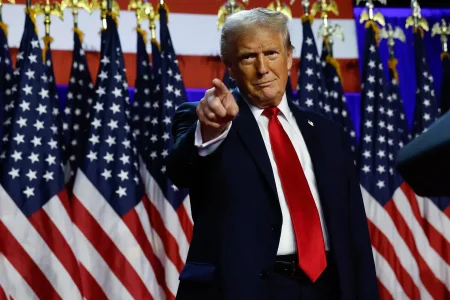Biden Administration Abandons Sweeping Student Loan Forgiveness Plans, Shifting Focus to Existing Programs
The Biden administration formally withdrew two ambitious student loan forgiveness proposals on Friday, signaling a retreat from its broader efforts to provide widespread debt relief. These initiatives, designed to address ballooning loan balances due to interest accrual and offer relief to borrowers facing significant financial hardship, could have impacted over 30 million individuals. The decision comes amidst ongoing legal challenges to the administration’s student loan forgiveness endeavors, coupled with the impending transition to a new presidential administration, making the successful implementation of these plans increasingly improbable. By withdrawing the proposals, the administration aims to shield borrowers from potentially detrimental actions by the incoming administration and potentially preserve these frameworks for future consideration.
The first abandoned proposal, often referred to as "Plan B," emerged after the Supreme Court struck down the administration’s initial plan to provide $10,000 in loan forgiveness to most borrowers. "Plan B" targeted specific groups: borrowers with excessive interest accrual, those who attended underperforming institutions, individuals with long-standing loans (20-25 years), and those eligible for but unaware of existing forgiveness programs. The second proposal centered on hardship-based relief, incorporating automatic relief based on indicators such as low income, debt burden, eligibility for means-tested government programs, and disability status, while also allowing for individualized application reviews. Both initiatives faced significant hurdles. "Plan B" was entangled in legal battles and subject to an injunction, effectively halting its progress. The hardship-based plan was not slated for finalization until 2025, well beyond President Biden’s current term.
The administration’s decision to withdraw the proposals stems from multiple factors. The ongoing litigation and the incoming administration posed significant implementation challenges, rendering success unlikely. Further, the move preemptively prevents the incoming administration from potentially manipulating the draft rules to the detriment of borrowers, such as imposing new restrictions on future forgiveness initiatives. By withdrawing the regulations before a final court ruling on "Plan B," the administration effectively renders the lawsuit moot, preventing potentially unfavorable precedents that could restrict future administrations’ ability to enact similar relief measures. This withdrawal forces the incoming administration to start from scratch if they wish to pursue new student loan regulations, a time-consuming and complex process that can be subject to legal challenges, as the Biden administration itself experienced.
While these broader plans have been abandoned, the Biden administration continues to highlight its successful initiatives in targeted student loan forgiveness. This includes significant improvements to the Public Service Loan Forgiveness (PSLF) program, with over one million borrowers receiving relief during the past four years, including a recent announcement of an additional 55,000 approvals. The administration boasts considerable success in other areas, including $56.5 billion in forgiveness through Income-Driven Repayment (IDR) plans, $28.7 billion for borrowers defrauded by institutions, and $16.2 billion in medical-related discharges through the Total and Permanent Disability (TPD) program. These accomplishments underscore the administration’s ongoing commitment to targeted relief despite the setback on broader forgiveness initiatives.
Looking ahead, the landscape of student loan forgiveness remains uncertain. The Biden administration recently reinstated two IDR plans (ICR and PAYE), offering eventual loan forgiveness after 20-25 years. This move comes as the future of the SAVE plan, a newer IDR option, faces potential legal challenges or repeal by the incoming administration. With a shift in political control, borrowers can anticipate potential changes impacting forgiveness programs. Discussions include repealing IDR time-based forgiveness for new borrowers and restricting future executive action on student loan relief through budget reconciliation, though the extent of any rollbacks remains unclear.
Amidst this uncertainty, borrower advocates urge the Biden administration to finalize relief for tens of thousands of already-approved borrowers awaiting disbursement. Some groups also advocate for unilateral debt cancellation for older borrowers before the end of President Biden’s term. The future of student loan forgiveness is likely to be a focal point of policy debates and political maneuvering in the coming months, with the potential for significant changes affecting millions of borrowers. The interplay between the outgoing and incoming administrations, the judiciary, and borrower advocacy groups will shape the course of these programs and determine the ultimate extent of relief available to those burdened by student loan debt.















